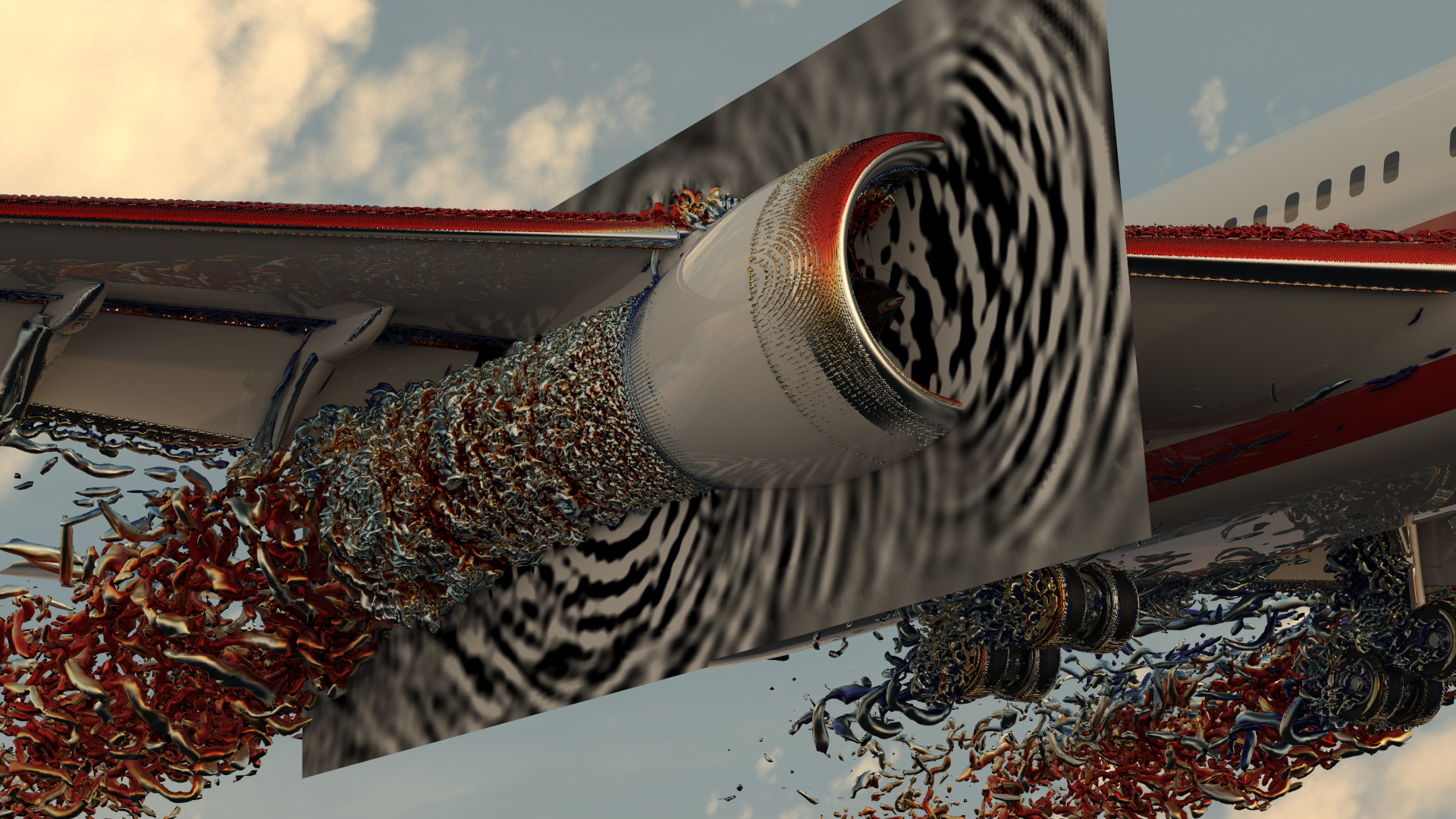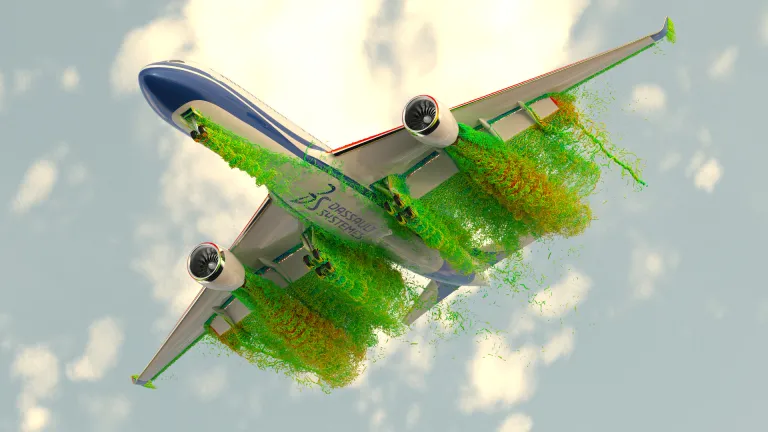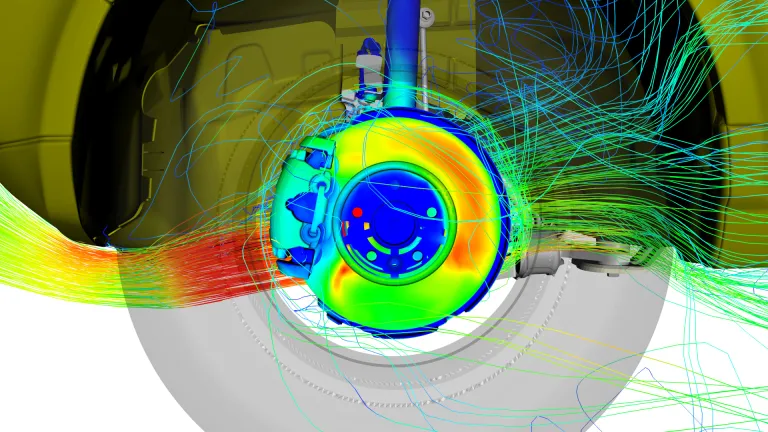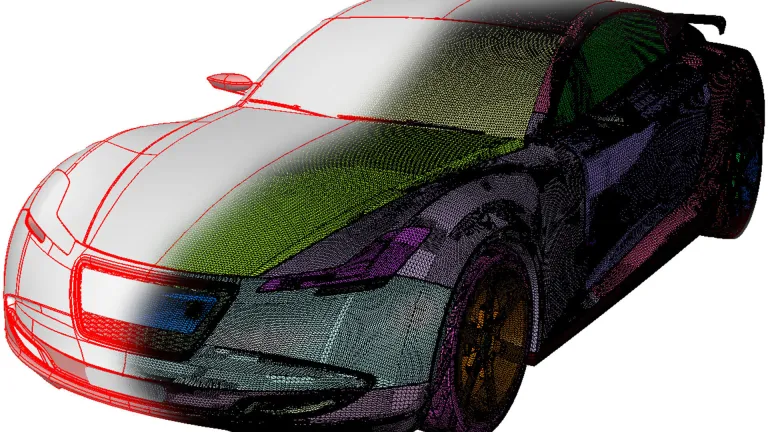PowerACOUSTICS
Noise Analysis
Design Quieter Products
PowerACOUSTICS® is the leader in digital acoustic and aeroacoustic solutions for applications including cars, heavy equipment, trains, and aircraft. When coupled with PowerFLOW, PowerACOUSTICS provides visual insight into acoustic and aeroacoustic capabilities through extensive noise-quality testing. It enables you to identify noise sources and provides insight into how design adjustments affect noise output so you can optimize prototypes. To improve noise performance, PowerACOUSTICS can certify that machinery conforms to noise-level regulations and requirements.
- Features & Benefits
- Key Capabilities
Features & Benefits of PowerACOUSTICS
Digital prototyping and virtual measurement
PowerFLOW coupled with PowerACOUSTICS modules gives access to digital acoustic and aeroacoustic facilities which are cost-effective. This solution provides enhanced capabilities through detailed visual insight into how design details and changes impact the noise levels and quality. Noise can be considered at an early design stage and issues quickly identified and resolved, rather than being a late afterthought where mitigation is time-consuming and expensive.
Evaluating noise quality
Design alternatives can be compared using audio signal synthesis. Instead of looking only at plots and graphs with eyes, noise can be analyzed directly with ears. This analysis method helps both acoustic engineers and non-experts to get a better perception of the noise quality and evaluate the importance of design modifications.
Matching noise regulations
Assess acoustic performance of cars, heavy equipment, trains or aircraft against regulatory requirements to improve the ability to design products that pass physical tests the first time.
Seeing noise sources
Identifying the origin of noise issues is complex, requiring time and expertise. PowerACOUSTICS FIND module gives simple access to this knowledge by pinpointing noise areas inside or outside the system and drives the design optimization.
Key Capabilities of PowerACOUSTICS
Full-featured temporal and Fourier space signal processing
- Complete and advanced analyses of transient results on probes, rakes, surfaces and fluids in time and frequency domains.
- Evaluate noise metrics, cross-correlation, coherence and dozens of advanced quantities.
2-D and 3-D filtering operations
- Highlight sources of problems at specific frequencies by creating, for instance, band-filtered animations.
- Extract hidden acoustic fields from turbulent regions using the Acoustic Wavenumber Filter (AWF) technique.
Communication of results
- Generate audio signals to better evaluate quality and designs.
- Visualize 3-D images and animations with PowerVIZ® including realistic rendering capabilities to better connect physical mechanisms to geometry details.
Interior wind noise modeling
- Predict noise spectra at the occupant’s head generated by exterior wind noise transmitting through the vehicle structure.
- Include turbulent and acoustic contributions produced by the exterior wind noise excitations.
- A fully integrated solution including validated and tailorable vehicle cabin templates handled with an embedded Statistical Energy Analysis (SEA) solver.
- Ability to export panel contributions to third-party SEA solvers to leverage output results into in-house NVH processes.
Interior wind noise quality evaluation
- Play the wind noise contributions inside the cabin and evaluate the importance of the human ear’s positions.
- Derive noise metrics such dB, dBA, sones, or Articulation Index (AI) to evaluate the noise quality.
- Analysis methods for contributions from greenhouse and underbody panels and seals.
- Ability to import non-simulated noise contributions obtained from acoustic testing such as road, tire and engine noises.
Design & sound package parameter studies
- Evaluate and compare the performances of different side mirrors, A-pillars, hoods and appendages designs.
- Evaluate the relative importance of each noise contributor to target the main problems.
- Set up and vary panels and cabin properties to evaluate the impact on interior noise levels.
- Quantify the effect of changes to panels and interior absorption properties.
Reliable & validated acoustic analysis solution
- The PowerACOUSTICS best practices for exterior wind noise combined with its noise transmission module have been validated extensively.
- Users can confidently rely on the accuracy and robustness of the acoustic analysis methods to generate results that help develop quieter vehicles.
Far-field noise predictions
- Noise can be evaluated as far as needed from the sources going beyond PowerFLOW simulation domains.
- Leverage a fully coupled far-field noise solver based on the Ffowcs-Williams and Hawkings (FW-H) acoustic analogy.
- Evaluate ground reflections and absorption effects based on source image formulation.
Predictions of fly-over, pass-by & wind tunnel configurations
- Predict noise from landing planes and gears, passing-by trains or construction equipment.
- Solid and permeable surface formulations are available using solid or virtual surfaces as inputs.
Access to noise & digital certification metrics.
- FAA, ISO, and DIN standard procedures can be applied to FFN pressure signals.
Insight into noise source locations
- Perform contribution acoustic analysis from any source region.
- Output far-field microphone signals can be plugged into inverse methods algorithms to locate noise sources.
Intuitive & easy-to-use aeroacoustics design tool
- Identify and quantify broadband flow noise sources in or around any geometries.
- Guide engineers to the most important issues to efficiently reduce noise levels.
3-D acoustic sources visualization & clustering
- Spatial representation of noise source field with PowerVIZ including realistic rendering capabilities.
- Clustering of noise sources to identify individual source regions.
Prioritize candidate design features to be optimized
- Identify geometry details responsible for noise by connecting sources to geometry failures.
- Source acoustics power can be used as objective functions to drive optimization studies.
FAQ About Acoustic Simulation & Analysis Software
Also Discover
Learn What SIMULIA Can Do for You
Speak with a SIMULIA expert to learn how our solutions enable seamless collaboration and sustainable innovation at organizations of every size.
Get Started
Courses and classes are available for students, academia, professionals and companies. Find the right SIMULIA training for you.
Get Help
Find information on software & hardware certification, software downloads, user documentation, support contact and services offering




